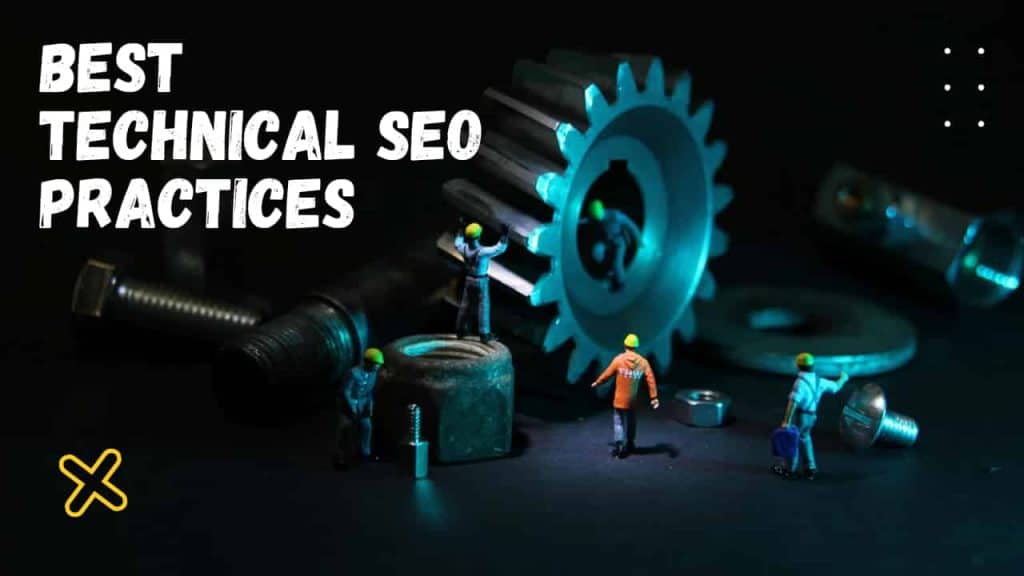When I just started blogging I don’t know even about technical SEO terms and when I knew I have a fear of the word technical because I did have not more experience in computer science. But the real thing is it’s very simple to do.
That is why I write this article, in which we’re going to go through some best technical SEO practices for beginners so you can keep your site in good health. So, Let’s get started.
Site Structure
So the first thing you should do is ensure that your site structure follows a logical hierarchy. Site structure is simply the way you organize content on your website. You can think of it as a mind map.
At the top you’d have your home page then you’d probably have main topics that branch out from your homepage like your services page your blog and your about page. Then from these main topics, you’d probably have even more branches to other pages.

These branches represent internal links which are just links from one page on your site to another. They help search engines understand the relationship between these pages. Site structure also helps search engines to crawl your pages more efficiently which is why having a logical hierarchy is important.
Loading Speed
The second thing is to ensure your pages don’t load slow. As you may know, page speed has been a confirmed ranking factor for desktop search since 2010 and in 2018 google announced that they’d be using page speed in mobile search rankings. Now you don’t need to obsess over every millisecond it takes for your page to load.
Google says the speed update as we’re calling it will only affect pages that deliver the slowest experience to users and will only affect a small percentage of queries. So the bottom line is you don’t want your pages to load slow.
There are two very basic things that I think every website should do.
Caching Website
The first is to cache your website’s content. Caching is basically a way to temporarily store copies of files so they can be delivered to visitors more efficiently, and most web hosting companies that I’ve come across have caching features.
Compressing Imaging
The second thing you can do is compress your images compressing images makes your file sizes smaller and smaller files load faster. You can use a tool like short pixel which has both a web interface and a WordPress plugin.
Now if you wanted to take page speed a step further then it can get quite technical and complex so we will talk about it in a separate article on how to speed up a WordPress website using cloud flare and a WordPress plugin.
50 Technical Errors Are Good
The final thing I want to talk about is to do your best to stay on top of around 50 potential SEO errors. Trust me it’s not as bad as it sounds. There are potentially hundreds of technical SEO issues that can and some will definitely happen to your site.
Some of these things include pages becoming broken that still have internal links pointing at them orphan pages which are pages on your site that have no incoming internal links and these are great because they can make it tough for search engines to actually discover duplicate content issues and redirect chains to name a few.
Now there’s no point in me going through 50 different potential issues because it’ll only matter to you if you run into them.
Auditing
So what I recommend you do is run scheduled website audits on your site and a website audit will give you a full analysis of potential issues that could be harming your website’s SEO performance.
If you’re an ahrefs user you can do that using a site audit tool and even if you don’t have an ahrefs paid plan you can sign up for a free ahrefs webmaster tools account which will let you crawl up to 10,000 pages on each website you own.
To get started go to ahrefs.com and sign up for your free webmaster tools account then you’ll need to verify your website meaning prove that you actually own it. You can do that using Google search console which is the easiest method or if you don’t have a search console account you can do it manually just enter your domain and click continue then verify your website using one of these three methods.
Next, choose to run the first audit for your selected domain and schedule weekly audits and you’ll also enable the crawl external links option to ensure that we catch any broken or redirected outgoing links hit import and the crawl should start running.
Now after the crawl has completed go to the overview report in your site audit project and you’ll immediately see things like your health score which is a percentage of URLs on your site that don’t have errors you’ll also see the top issues ahrefs found on your site as well as the number of URLs that had the issue.
So when you run into an issue you can click on the caret to see a description of what it means and also a short snippet of how to fix it and once you have an idea of what the issue is and how to fix it just click on the number under the crawled column to see the affected URLs.
Then it’s just a matter of fixing them one by one or hiring someone to help and since you set up weekly scheduled audits you can revisit the overview report to see if there’s any SEO maintenance you can do.
Bottom Line
Everything you’ve learned in this article should be enough to keep your site in good technical health. Thank you for joining me and I hope you were able to get value from the article make sure to subscribe for more actionable SEO and marketing tutorials feel free to browse around our site and if you have any questions leave them in the comments and we’ll do our best to get to each one.


Very well presented. Every quote was awesome and thanks for sharing the content. Keep sharing and keep motivating others.